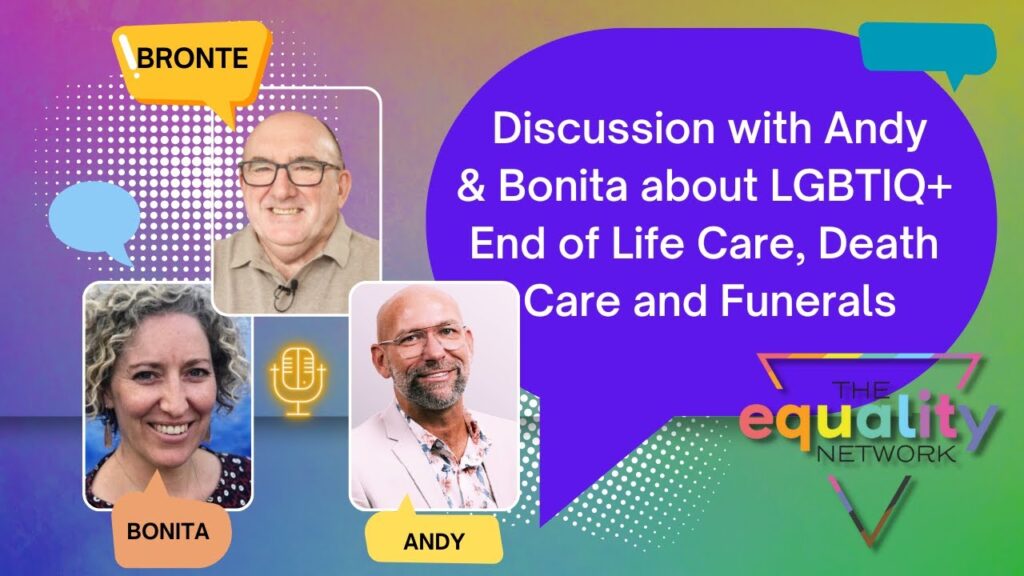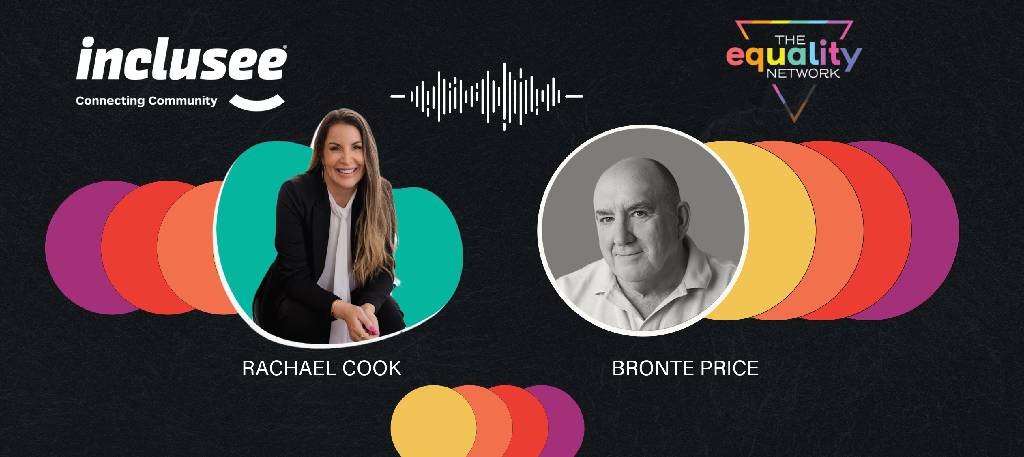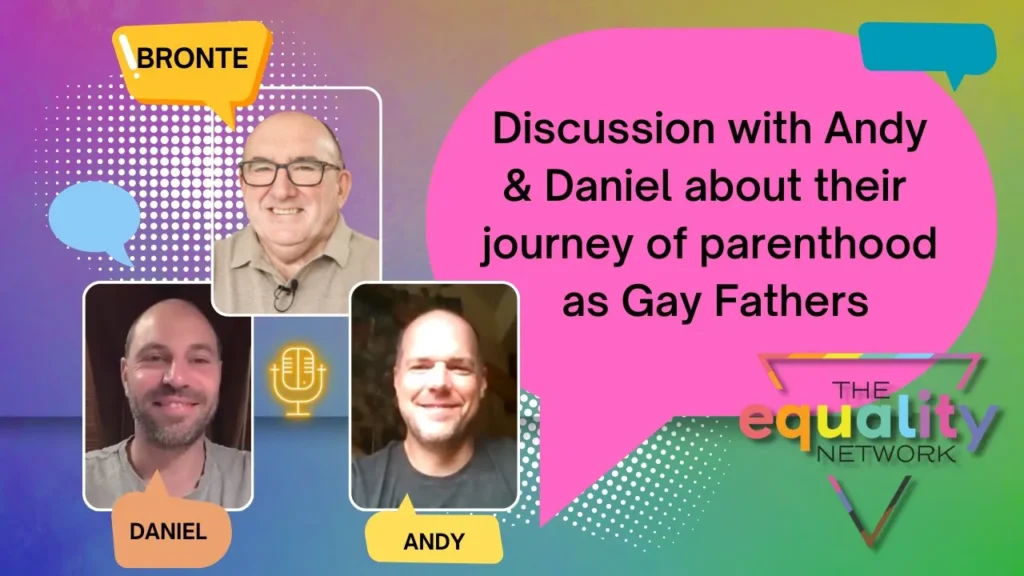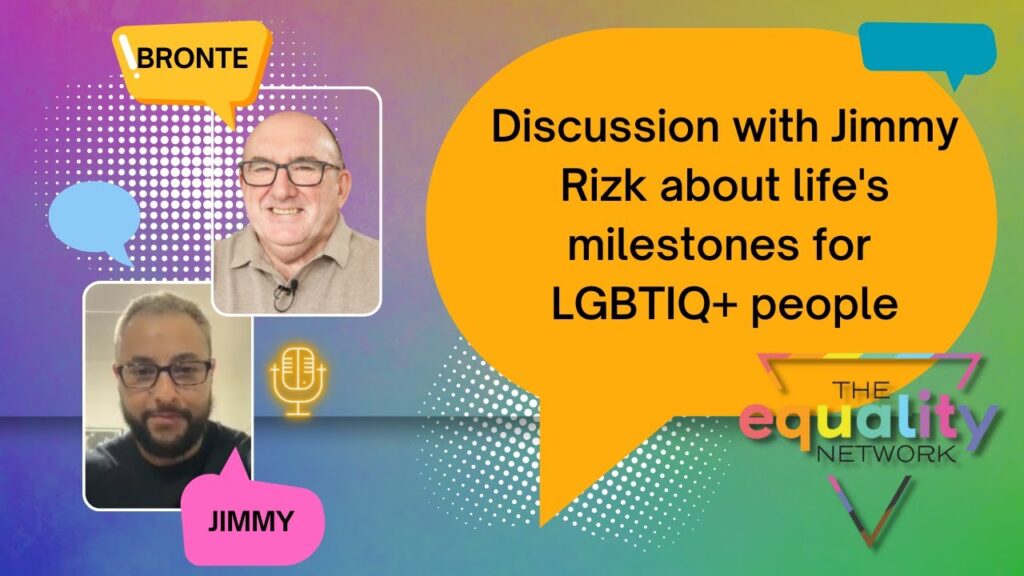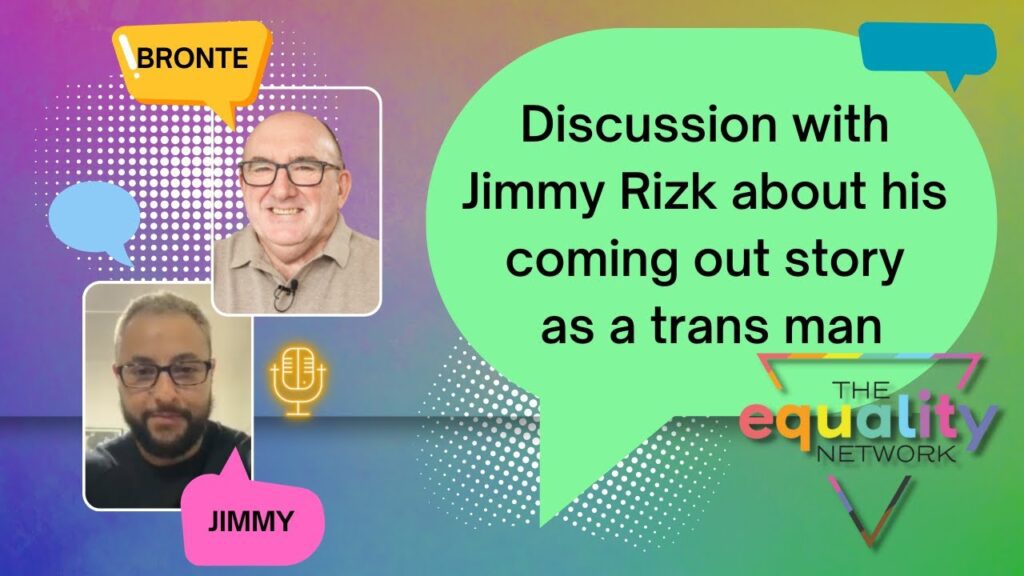LGBTIQA+ Wedding Trends and Why Inclusion Training Matters
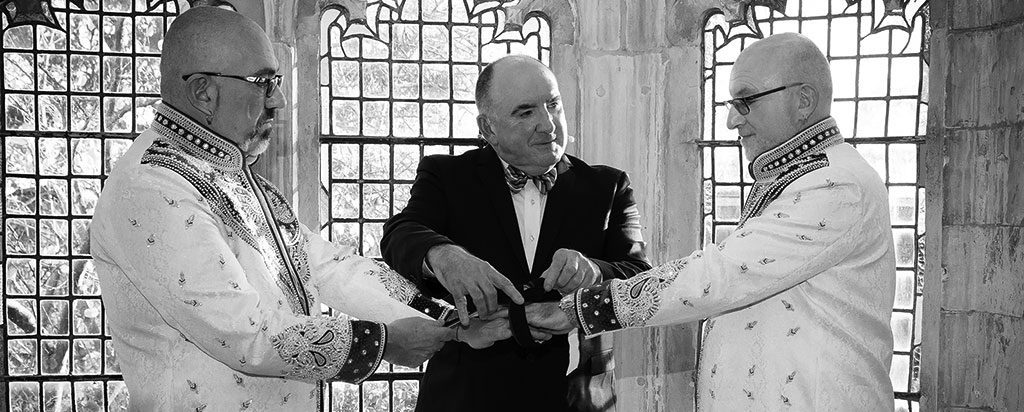
Inclusion training has become vital for the Australian wedding industry, especially with the legalisation of marriage equality in December 2017. LGBTIQA+ weddings now symbolise inclusion and progress, adding to the diverse tapestry of love in our society, fostering acceptance and unity.
But more than that: they’ve breathed new life into some parts of the industry, introducing fresh trends and perspectives. Without resorting to stereotypes, LGBTIQA+ weddings have inspired creativity, challenged some old traditions, and encouraged wedding professionals to be more inclusive in their services. They’re a testament to the commitment of Australians to giving everyone a ‘fair go’ and equality, making the wedding industry more vibrant, diverse, and representative of the love that literally knows no bounds, love that literally can neither be created nor destroyed by law.
Historical Context
In December 2017, Australia marked an historic milestone by legalising marriage equality. This momentous decision was not just a legal change; it had the potential to be the trigger for a profound impact on the wedding industry, sparking a wave of transformation and inclusion.
Before this landmark event, the wedding industry had been bound by traditional norms, emphasising the concepts of “bride” and “groom” in a heterosexual context. However, with the legalisation of marriage equality, the industry initially underwent a seismic shift. Wedding vendors faced both opportunities and challenges in catering to LGBTIQA+ weddings.
One of the significant challenges was adapting to the diverse needs and wishes of LGBTIQA+ couples. Wedding vendors had to re-evaluate their offerings, from ceremonies’ content to wedding attire to venue choices to cake toppers and even terminology, if they were to be relevant to LGBTIQA+ couples. This shift required businesses to update their practices and marketing strategies and be more inclusive. For many, it meant working with couples in which one or both parties were lesbian, gay, bisexual, transgender, intersex, queer, asexual, gender diverse, non-binary, gender fluid and so on for the very first time in their careers in the wedding industry.
In tandem with these industry changes, there was initially a noticeable shift in societal attitudes towards LGBTIQA+ weddings. Acceptance and support grew, with more Australians embracing love in all its forms. These changing attitudes have not only been reflected in the legal sphere but also in the hearts and minds of many individuals across the nation. It needs to be remembered that one in three of eligible Australians voted against marriage equality.
For the most part, the legalisation of marriage equality in Australia brought about positive transformations in the wedding industry and in society, underscoring the importance of inclusion as one of our national values.
But between the early times of marriage equality being made law in Australia and now, it has to be said, there has been a reversion to the norm despite an initial flurry of excitement and activity. At the outset, lots of wedding vendors suddenly put rainbows on their website and marketing collateral to somehow reassure LGBTIQA+ couples that they were queer-friendly, as if they had become so just overnight. And many were quite happily involved in the weddings of LGBTIQA+ couples without even thinking what that could mean, in terms of treating them differently from straight couples, let alone how they, as wedding suppliers, could put back into the LGBTIQA+ community, as well as take from it. That excitement has now died down, and most wedding vendors simply treat LGBTIQA+ couples the same as they treat straight couples, even though the lived experiences of LGBTIQA+ couples are often very different from those of straight couples. Many wedding vendors now seem to think that ‘we’ve done marriage equality – let’s move on’. That is concerning, particularly as few wedding vendors have undergone any queer literacy training or LGBTIQA+ inclusion training.
Evolving Trends in LGBTIQA+ Weddings
A. Inclusion in wedding planning
1. Expanding the definition of ‘bride’ and ‘groom’
Inclusion in wedding planning made some initial changes to the Australian wedding landscape after the legalisation of marriage equality. One significant shift was the expansion of the traditional definitions of ‘bride’ and ‘groom.’ Marriage is no longer gender-based – and so, couples no longer feel confined by these gendered roles, openly asking for more personalisation in their ceremonies to reflect their authentic selves. That said, each person who gets married in Australia still has to tick a box, saying that their ‘marriage title’ is ‘partner’, ‘bride’ or ‘groom’, all of which are heteronormative titles that have little relevance to LGBTIQA+ couples.
2. Inclusive wedding attire
Another notable trend is the rise of inclusive wedding attire for LGBTIQA+ weddings. This move ensures that all couples, regardless of their gender identity or sexuality, can express themselves authentically on their special day – that is, be comfortable enough in their own skin to wear whatever they like on their special day (notwithstanding pressure from friends and family members to do otherwise, in lots of cases!)
B. Venue choices
1. Unique and unconventional locations
In Australia, some traditional wedding venues have undergone a transformative shift since the legalisation of marriage equality in 2017. Most LGBTIQA+ couples are opting for unique and unconventional locations, favouring intimate gatherings with selected “chosen” family members, rather than opting into the ‘trappings’ of traditional weddings held at ‘wedding reception venues’. Indeed, thanks to this trend and to the impact of COVID-19, numerous traditional wedding venues that resisted changing are no longer around – they simply didn’t survive.
2. Venues with inclusive policies
In Australia, some traditional wedding venues have undergone a transformative shift since the legalisation of marriage equality in 2017. Most LGBTIQA+ couples are opting for unique and unconventional locations, favouring intimate gatherings with selected “chosen” family members, rather than opting into the ‘trappings’ of traditional weddings held at ‘wedding reception venues’. Indeed, thanks to this trend and to the impact of COVID-19, numerous traditional wedding venues that resisted changing are no longer around – they simply didn’t survive.
C. Personalised ceremonies and vows
1. Celebrating individual stories, journeys and designing innovative ceremonies.
Many LGBTIQA+ couples are eschewing the traditional big wedding, and are opting for ‘Short and Sweet’ marriage ceremonies, instead. These short and sweet weddings celebrate love in its purest form, putting the emphasis on the marriage ceremony rather than inviting as many guests as they possibly can, and try to out-do the most recent wedding they heard about. Moreover, venues with inclusive policies and socially just values are gaining popularity, ensuring that all couples, regardless of their sexual orientation, feel welcome and valued on their special day. This not only reflects the changing attitudes towards LGBTIQA+ weddings but also sets a precedent for a more diverse and accepting wedding industry in Australia.
In the ever-evolving landscape of LGBTIQA+ weddings, the trend away from templated traditional ceremonies has paved the way for a higher degree of personalisation. It wasn’t just about getting rid of old traditional rituals; it was more about the fact that the vast majority of those rituals – made by and for straight couples – had no relevance to LGBTIQA+ couples. LGBTIQA+ couples now celebrate their unique stories and their love journeys through innovative ceremonies that throw tradition to the wind.
2. Non-traditional tailored vows and rituals
These ceremonies reflect the individuality of each couple, from diverse backgrounds, genders and sexual orientations. Non-traditional, tailored vows and modern rituals have become the norm for LGBTIQA+ couples, enabling them to express their love in their own words, often with heartfelt promises that resonate deeply. It’s not just about saying “I do” anymore; it’s about crafting a wedding experience that authentically represents the couple’s love story, creating memories that will last a lifetime and delivering them in ways that have deep meaning and relevance. These trends showcase some of the potential seismic shifts we are witnessing in the Australian wedding industry today.
D. Diverse and LGBTIQA+ friendly vendor selection
1. Importance of inclusive vendor networks and need for safe space
In this evolving wedding industry, selection of diverse vendors with high queer literacy has become a cornerstone of creating inclusive and memorable celebrations. This trend underscores the importance of establishing inclusive vendor networks and the need for safe spaces where all couples can express their love without fear of discrimination, vilification or harassment. It’s beyond disappointing to still hear of LGBTIQA+ couples who’ve hired wedding vendors who simply are not safe and who are not inclusive, all these years after marriage equality became law in Australia.
2. Highlighting LGBTIQA+ friendly vendors in Australia
Importance of inclusive vendor networks and need for safe space: Inclusive networks of vendors who have been educated in queer literacy are vital because they provide a supportive environment for couples to choose from a range of trusted professionals who respect and embrace them, their lived experiences and their unique love stories.
These networks create safe spaces where LGBTQ+ couples can openly discuss what they want for their wedding, ensuring that every detail of their special day aligns with their gender identities, sexualities and values. Inclusion training within these networks fosters empathy and educates vendors about the diverse needs and wishes of LGBTQ+ couples. It is still the case, however, that only a small percentage of wedding vendors in Australia have undergone LGBTIQA+ inclusion training to become more educated about LGBTIQA+ people, their culture, language, history and traditions.
Highlighting LGBTIQA+ friendly vendors: The rise of LGBTIQA+ friendly vendors – vendors who actually ARE ‘LGBTIQA+ friendly’ rather than just say they are – across Australia has been a slow but steady shift. Those vendors who have been trained in LGBTIQA+ inclusion are not just passive allies: they actively advocate for diversity and inclusivity. They are essential to the creation of wedding experiences that authentically reflect the love and identities of all couples. By highlighting these vendors, we encourage and expect others in the industry to follow suit.
E. Role played by chosen family in the wedding
In LGBTIQA+ weddings, mateship often goes beyond blood ties. These chosen people, known as chosen family, not linked by birth but bound by a fabulous friendship, play a serious and genuine role in what is arguably the most important day of the lives of LGBTIQA+ couples. They’re more than just witnesses: they’re part of the family in spirit. Whether it’s being a best mate, a trusted confidante, or even the celebrant, their role is quite indispensable on the wedding day. They lend support, share stories, and proudly stand tall beside the couple, making the ceremony a true celebration of love. So, we honour these chosen family members who prove that love and ‘family’ know no bounds and are not conditional on people’s gender or sexuality.
The Role of Inclusion Training
A. Definition and Importance of Inclusion Training for Wedding Vendors
Inclusion training for wedding vendors has become all the more indispensable for what should be the fast changing landscape of the modern Australian wedding industry. It refers to the process of educating and training wedding professionals about the principles of diversity, equity, equality, and respect for all couples, regardless of their sexual orientation, gender identity, race, religion, or any other characteristic.
The essence of inclusion training lies in enabling wedding professionals to create an environment where all couples getting married feel safe, welcomed, respected, and valued in the lead-up to and on their wedding day. This goes beyond merely avoiding discrimination; it’s about actively promoting an atmosphere where all are embraced and understood. It ensures that all couples can plan and celebrate their weddings without fear of prejudice or bias, discrimination or vilification.
B. Benefits for Wedding Professionals and Vendors
Enhancing Customer Satisfaction in the LGBTIQA+ Community – Inclusion training helps wedding vendors better understand the unique lived experiences, needs and desires of LGBTIQA+ couples. By familiarising themselves with the language, culture, customs, traditions, and sensitivities of this diverse community, vendors can tailor their services to provide a more personalised, relevant and authentic experience for couples. This leads to increased customer satisfaction, making these couples more likely to recommend inclusive vendors to their LGBTIQA+ friends.
Expanding Client Base – In today’s Australia, diversity is celebrated, and marriage equality is legal. By embracing inclusion training, wedding vendors open their doors to a broader client base, tapping into a growing market of LGBTIQA+ couples who are eager to celebrate their love through weddings. Inclusive vendors not only gain access to this market but also foster goodwill within the community, which can result in long-term customer loyalty.
Challenges and Solutions
While significant progress has been made towards achieving inclusion in the Australian wedding industry, several challenges persist that hinder its complete realisation. This article will delve into the challenges faced by the industry and propose solutions to overcome them.
Prejudices and Biases
One of the biggest challenges faced by the wedding industry in Australia is the persistence of prejudices and biases against LGBTIQA+ couples. Some of these are unconscious, others are conscious. Despite the legalisation of marriage equality, some individuals and businesses still harbour discriminatory attitudes. These biases can manifest in various forms, such as subtle refusal to provide services to LGBTIQA+ couples, cunning discrimination in pricing, or a lack of enthusiasm in catering to their unique needs.
Addressing this challenge requires a multi-faceted approach. Firstly, it is crucial for individuals and businesses in the wedding industry to undergo diversity and inclusion training. Such training can help in identifying and dismantling prejudiced attitudes, fostering a more welcoming environment for LGBTIQA+ couples. Additionally, legal measures should be actively enforced to penalise any instances of discrimination within the industry. This includes monitoring and reporting mechanisms to ensure lawful treatment for all.
Lack of Awareness and Education
Another significant challenge is the lack of awareness and education within the professionals who comprise the wedding industry. Many vendors and professionals are unaware of the specific needs and wishes of LGBTIQA+ couples, leading to unintentional exclusion. This knowledge gap results in missed opportunities to cater to a diverse clientele effectively.
To address this challenge, wedding professionals should invest in workshops, seminars, and online resources – all of which are valuable tools for imparting this knowledge. Moreover, platforms should actively promote diverse representation and share success stories within the LGBTIQA+ wedding industry to inspire others.
Solutions for Overcoming Challenges
Mentorship and Networking within the Industry
Mentorship and networking are powerful tools for bridging gaps and fostering inclusion. Established businesses in the LGBTIQA+ wedding industry that have high queer literacy can mentor newcomers, sharing their experiences and insights. This mentorship can extend beyond business practices to include advice on handling prejudice and discrimination.
Networking events tailored to the LGBTIQA+ wedding industry – whether face-to-face or online – can also provide a platform for professionals to connect, collaborate, and learn from each other. These events can be inclusive and welcoming spaces where vendors and couples can interact and build relationships.
Achieving full inclusion in the LGBTIQA+ wedding industry in Australia requires addressing challenges related to prejudices, biases, and lack of awareness. To overcome these obstacles, the industry and the LGBTIQA+ community must invest in education campaigns, building diversity and inclusion at all levels.
Additionally, mentorship and networking within the industry can help bridge gaps and create a supportive community. By actively working towards these solutions, the LGBTIQA+ wedding industry can ensure that every couple can celebrate their love in ways that are relevant and authentic, without facing discrimination or exclusion.
Conclusion
In wrapping up this blog, it’s crucial for wedding professionals and vendors to wholeheartedly – and genuinely – embrace inclusion. Love knows no boundaries, and our industry should aptly reflect that. By being open to all couples, regardless of their gender identity or sexual orientation, we not only celebrate love in all its forms but also create a more vibrant and diverse wedding landscape in contemporary Australia.
As we’ve explored the evolving landscape of LGBTIQA+ weddings in Australia, we’ve witnessed progress and a growing acceptance of love in all its diversity. It’s our responsibility to continue this journey towards inclusivity, fostering a safe and welcoming space for all couples to celebrate their love authentically. Let’s ensure every wedding is a testament to love’s power to unite, uplift, and inspire.


